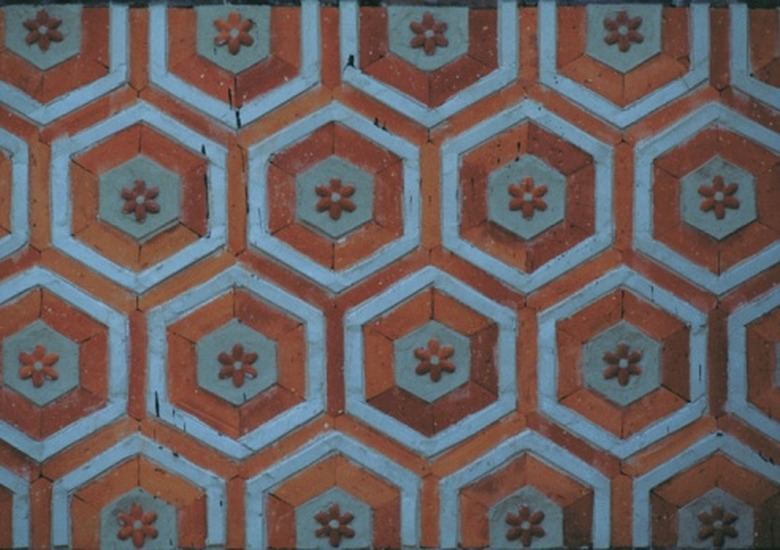What Type Of Floor Covering Can Be Laid Over Ceramic Tile?
Ceramic tile is a tough flooring surface that is as hard to remove as it is to damage after it is in place. It is set into a bed of thin-set that hardens like concrete, and the tile itself shatters like glass during removal. Taking out ceramic tile is dirty process that sends broken chips and concrete dust flying throughout the house. It is also expensive and very labor intensive. For these reasons, many homeowners decide to go right over the top of it with new flooring.
New Ceramic Tile
New Ceramic Tile
One way to replace a ceramic floor is to install a second layer of ceramic over top of it.The old floor must first be sanded to scratch up the glaze and allow the new thin-set to stick. Additionally, some patch leveling may be necessary to make the old floor flat enough to install over, and the added thickness may mean that existing doors have to be cut to a new height. These accommodations aside, it is an easy way to get a new floor without taking out the old one.
Wood Flooring
Wood Flooring
Solid wood flooring would require a thick plywood sub-floor before installation. This underlayment height, coupled with the 3/4 inch thickness of the flooring itself, would make the new floor too thick. Engineered wood flooring, on the other hand, can be glued directly to the existing ceramic. This type of wood ranges from 5/16 to 5/8 of an inch thick, and won't create a height problem. Most engineered flooring is prefinished, and this permits a very clean installation process.
Laminate Flooring
Laminate Flooring
Laminate flooring goes very well over ceramic tiles. It is a thin, solid flooring system that doesn't require adhesive, and comes with a padded underlayment that helps smooth out any contour from the ceramic. Laminate is a cheap, fast flooring solution that easily goes right over ceramic tile.
Carpet
Carpet
Carpet is another type of flooring that can be successfully installed over ceramic tile. Depending on what type of carpet or padding is selected, it will add some height to the floor. Also, the tack strip holes will all have to be drilled because the ceramic will shatter if you try to nail directly into it. You can also use epoxy to fasten the tack strip, but it can be messy and expensive. Even with the added steps and height, this approach gives you a new floor without the hassle of removing the ceramic.
